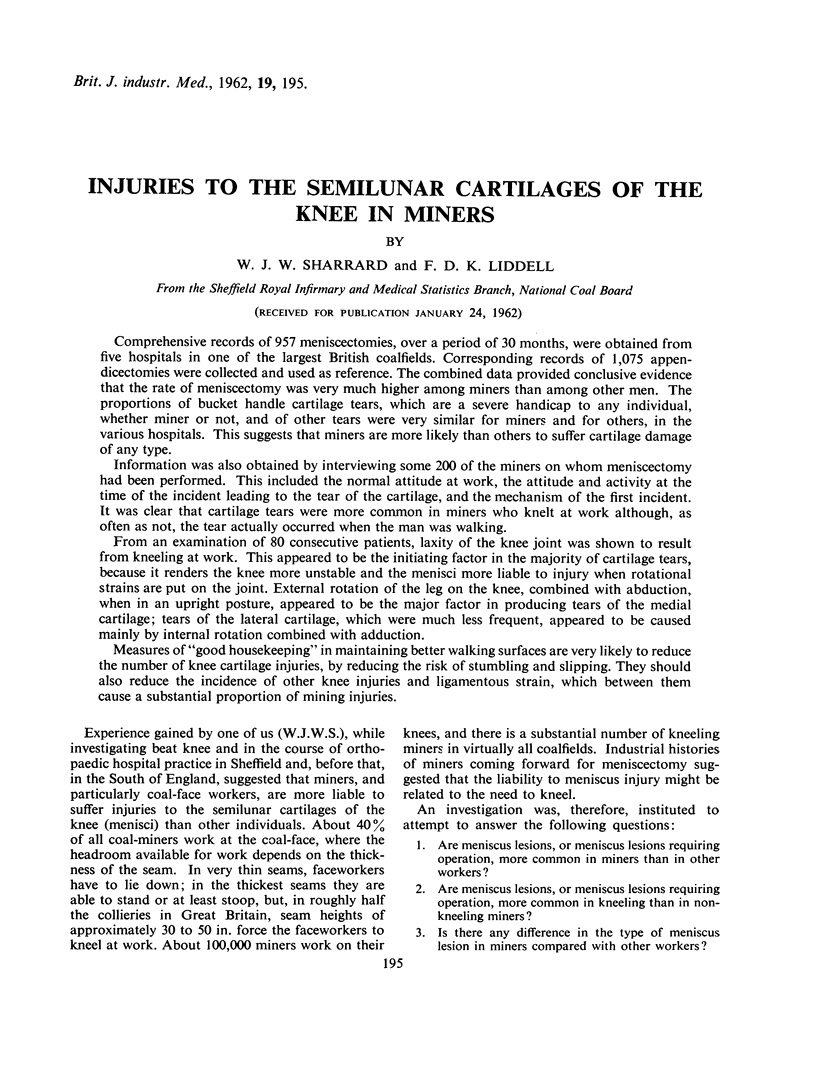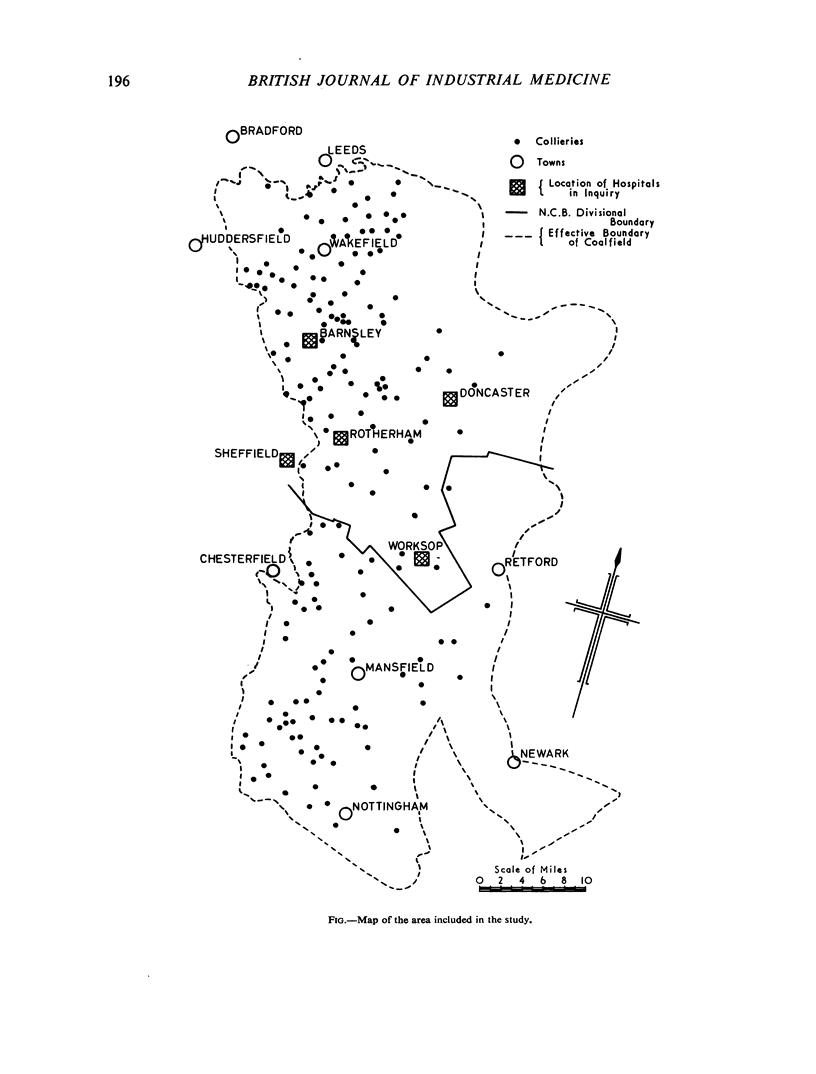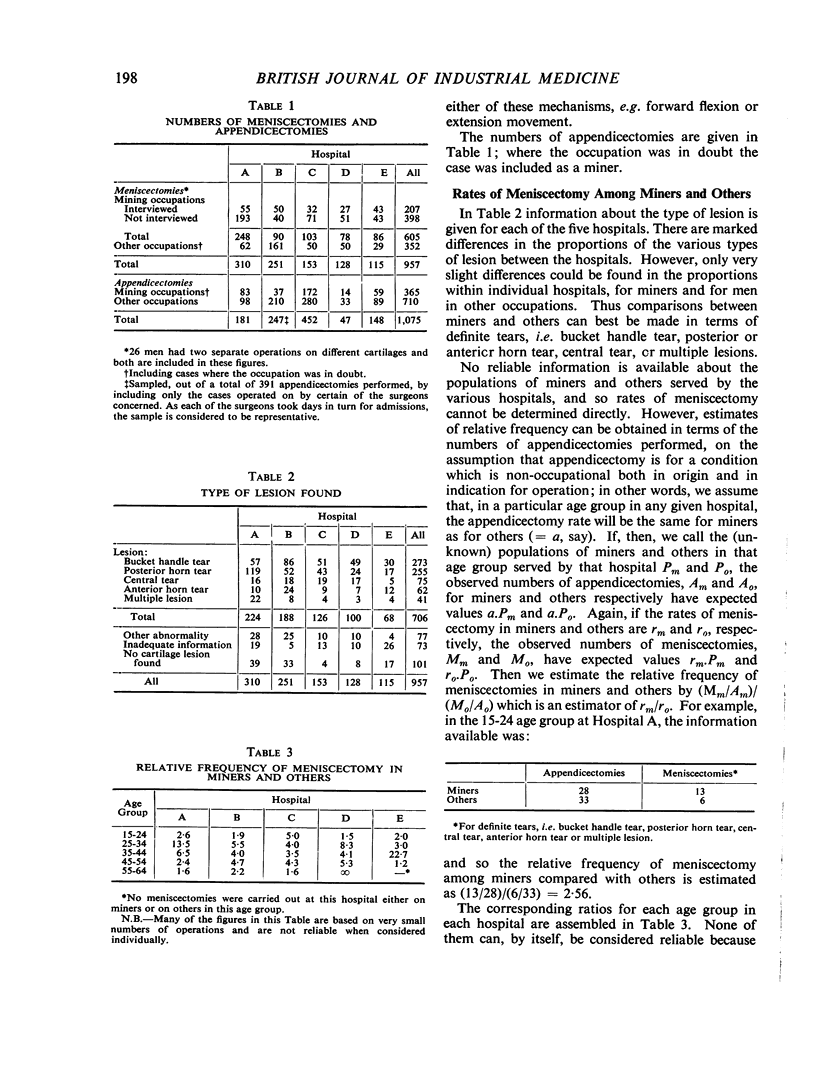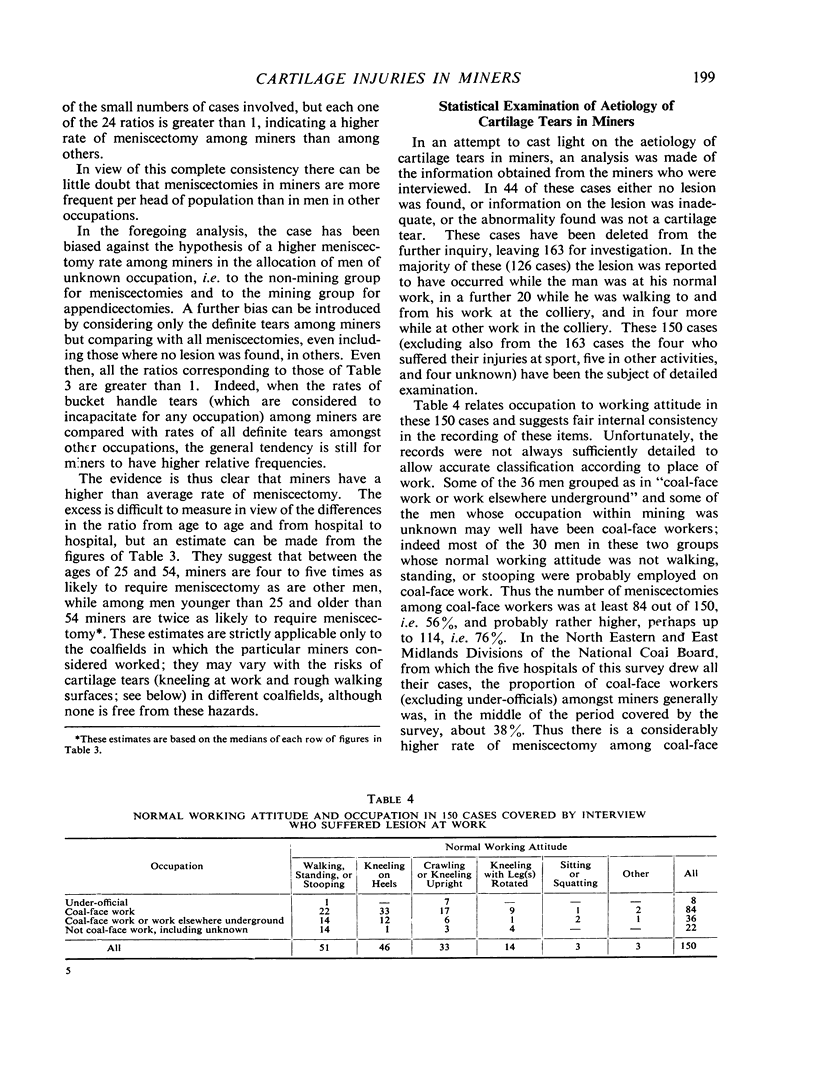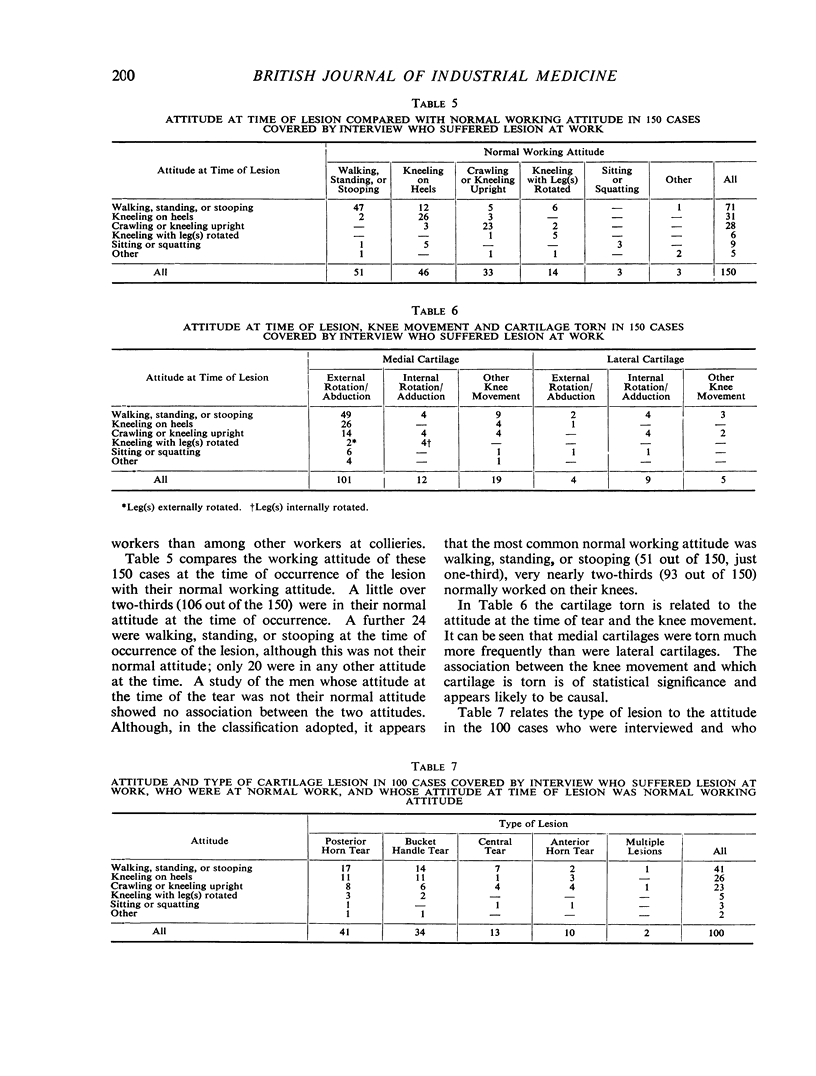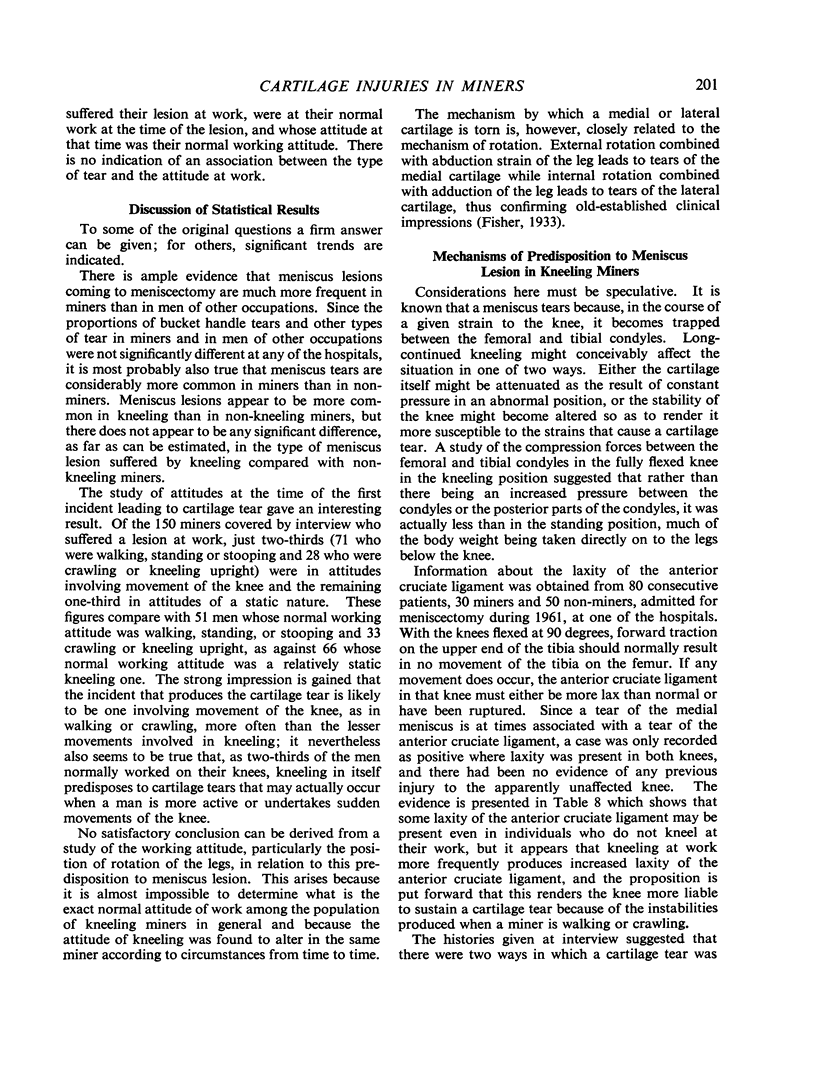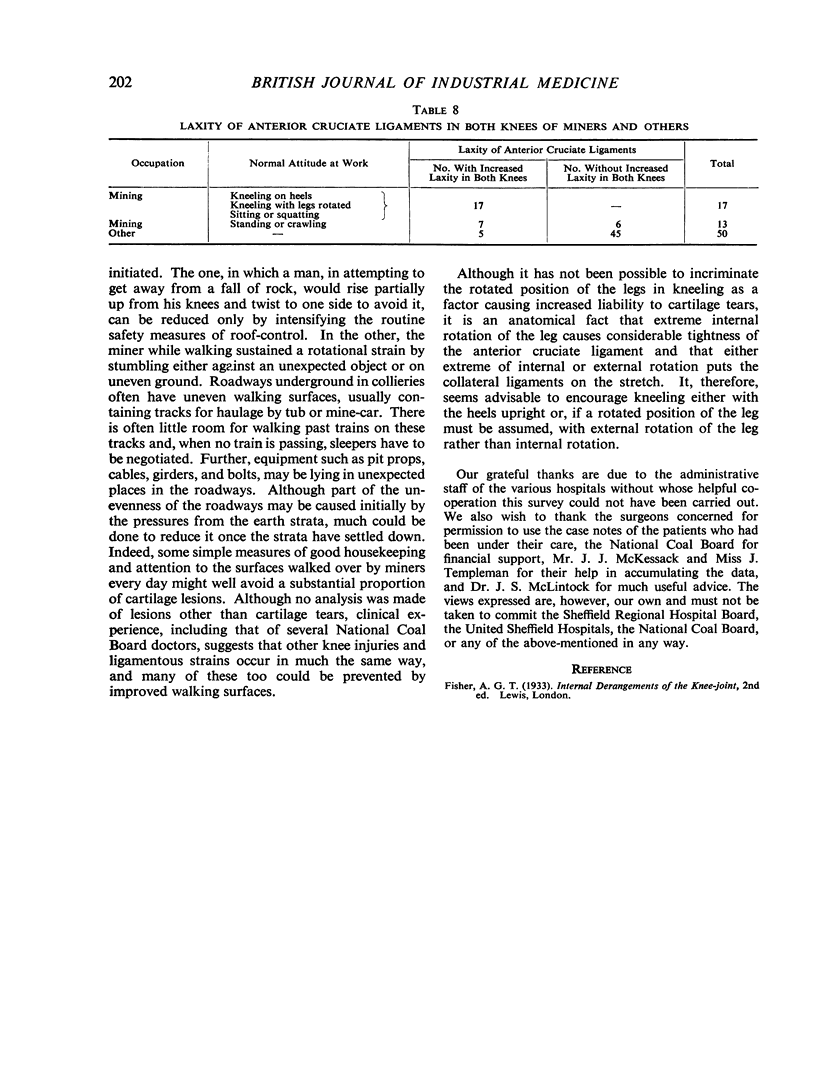Abstract
Comprehensive records of 957 meniscectomies, over a period of 30 months, were obtained from five hospitals in one of the largest British coalfields. Corresponding records of 1,075 appendicectomies were collected and used as reference. The combined data provided conclusive evidence that the rate of meniscectomy was very much higher among miners than among other men. The proportions of bucket handle cartilage tears, which are a severe handicap to any individual, whether miner or not, and of other tears were very similar for miners and for others, in the various hospitals. This suggests that miners are more likely than others to suffer cartilage damage of any type.
Information was also obtained by interviewing some 200 of the miners on whom meniscectomy had been performed. This included the normal attitude at work, the attitude and activity at the time of the incident leading to the tear of the cartilage, and the mechanism of the first incident. It was clear that cartilage tears were more common in miners who knelt at work although, as often as not, the tear actually occurred when the man was walking.
From an examination of 80 consecutive patients, laxity of the knee joint was shown to result from kneeling at work. This appeared to be the initiating factor in the majority of cartilage tears, because it renders the knee more unstable and the menisci more liable to injury when rotational strains are put on the joint. External rotation of the leg on the knee, combined with abduction, when in an upright posture, appeared to be the major factor in producing tears of the medical cartilage; tears of the lateral cartilage, which were much less frequent, appeared to be caused mainly by internal rotation combined with adduction.
Measures of “good housekeeping” in maintaining better walking surfaces are very likely to reduce the number of knee cartilage injuries, by reducing the risk of stumbling and slipping. They should also reduce the incidence of other knee injuries and ligamentous strain, which between them cause a substantial proportion of mining injuries.
Full text
PDF